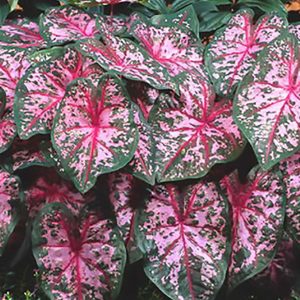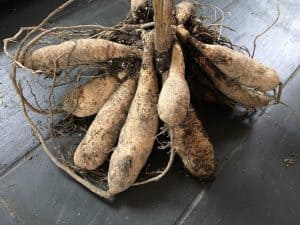 The beauties that graced our gardens and planters this summer will need to be dug up unless one is willing to risk the life of these summer bulbs.
The beauties that graced our gardens and planters this summer will need to be dug up unless one is willing to risk the life of these summer bulbs.
Summer bulbs are classified as the less hardy corms, bulbs, tubers, and rhizomes that flourish and thrive during the summer months, such as dahlias, cannas, caladiums, elephant ear, tuberous begonias, tuberoses, gladiolus, and acidanthera. The winter hardy bulbs like daffodil, hyacinth, and crocus are spring flowering and must be planted in fall.
However, we have discovered with some of our mild winters, even some of our summer bulbs are faring well and thriving year after year without the late fall ritual of digging and storage. Glads and cannas have been known to come back several years in a row, acting like a hardy perennial. Acidanthera and dahlia actually survived the winter of ’16-’17, a noteworthy and rare occurance.
The Process –
Once a hard freeze has killed back most of the foliage, or the the leaves have turned yellow or brown naturally, the bulbs can be lifted from the ground or taken out of their pots. Air dry in a shady location for about a week. Do not wash the soil off the bulbs as this removes an important protective layer.
After 7-10 days, brush off extra soil (again, do not get the bulbs wet!!!) and get ready to pack into paper bags or cardboard boxes. This is a good time to divide large clumps and separate the bulbs. Either wrap the bulbs in newspaper or shredded paper, or submerge them in packing peanuts, dry sand, vermiculite, or peat moss. The goal is to keep the bulbs from touching each other and allowing air flow so the bulbs can “breathe”.
Store the bulbs in the dark at about 50 degrees (45-60 is acceptable). Cool temperatures slow down the respiration process of the bulbs. Remember, these are living plants.
The bulbs can be removed as early as February or March if potting up and growing in a sunny window or greenhouse. If planting directly into the ground, unpack and plant in mid-April.

Secrets to Success:
- Bulbs must be cured at least 7 days after digging, in an area out of sunlight that won’t freeze.
- Do not wash bulbs or get wet at any time after digging.
- Bulbs that touch each other are more likely to rot. Separation with a dry, inert material improve viability.
- Storing bulbs around 50 degrees is best.
Though many summer bulbs seem to be hardy enough in Missouri, one might consider saving these bulbs in the possible incidence of rodent damage or unusually cold winter weather.
